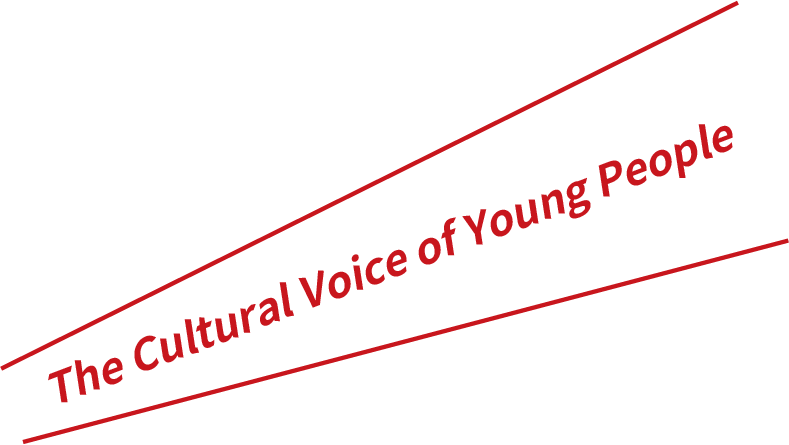
952 VAZAY TAMO, an Orchid Island based youth magazine founded by six young girls, flaunts bold and bright design alongside with diverse and interesting content. Readers would find cultural stories written from a young person’s perspective, opening up a window that gives people a glimpse of the young minds of Orchid Island.
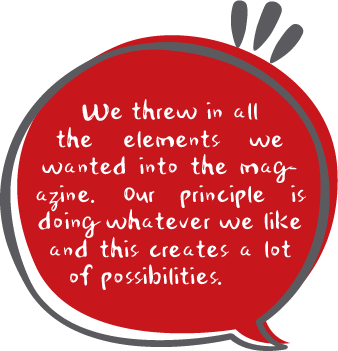
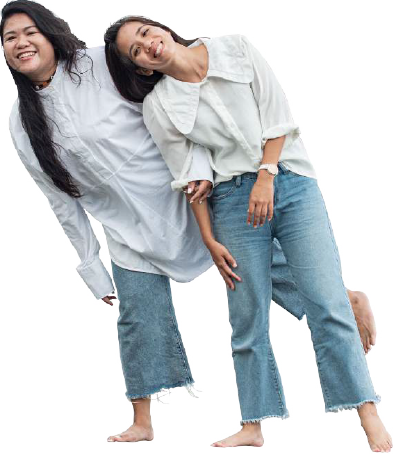
952 is more than just a postal code for Orchid Island. For the six girls born in the 1980s, it is a code that have access to a platform on which young people’s voice can be heard. 952 VAZAY TAMO was born in 2015. This Orchid Island based magazine offers young people’s perspectives on local matters, voicing the views of the young generation.
Compared to the indigenous peoples of Taiwan, reality gives those indigenous youths of Orchid Island almost no choice but to leave their native isle. There is only one high school on the island and no university at all. To pursue higher education, Tao kids have no choice but to leave their homeland. si oyatan and si namet also left for Taiwan to study and work once. High urban living expenses and separation from their families are the reasons why they have always wanted to come home. “You just feel that your feet are not grounded in Taiwan,” si oyatan admitted.
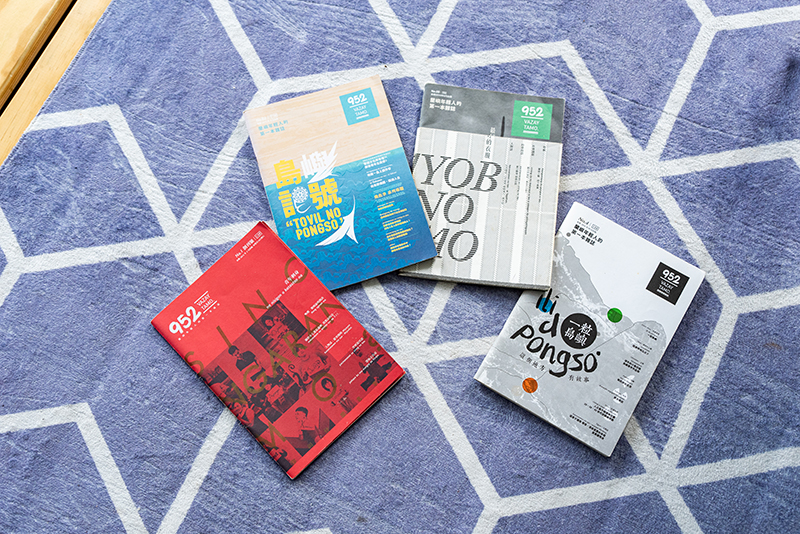
952 VAZAY TAMO, an Orchid Island magazine for young people.
Interpret Culture in a Way That is Attractive to Young People
Six years ago, the two came back to Orchid Island successively when they were about 25 years old. In addition to their daytime job, they exchanged ideas with their friends and 952 VAZAY TAMO was the brainchild of that effort. Consisted of six members, they built a “biracial” team. si oyatan, si namet and si matnaw are all Tao who grew up knowing each other. Lu Szu-Ying, Wu Hsin-Chieh, and Lin Mu-Yin are Non-indigenous from Taiwan. They all met and became friends on Orchid Island.
They share a love for magazine, writing and images. When they observed that most of the publications of Orchid Island are mostly news type and local matters were rarely covered in a fun and intriguing manner, the idea for creating a new magazine was born. “It would be fun if the magazine offers young people’s thoughts and perspectives while setting up an open environment for issue discussion or cultural interpretation in ways that intrigue young people,” si namet said.
With limited budget, only four issues were published, and the publication was temporarily halted in 2016. However, the arrival of the magazine filled a gap of the long-term absence of young people’s voice. VAZAY TAMO in the title means “our issues, our job” in Tao language.
The feature story of the first issue was “What is your name?”, starting with the most essential issue about self-identity and encouraging young people to reclaim their own indigenous name. The second issue “Island Symbols” introduced the common Tao totems and the stories behind totem culture to young readers. The third issue “The Best Attire” presented traditional Tao costume as well as new designs that combined both traditional and innovative styles. The fourth issue “An Isle” told the legends of each Tao community and illustrated the cultural root and landscape of their home isle.
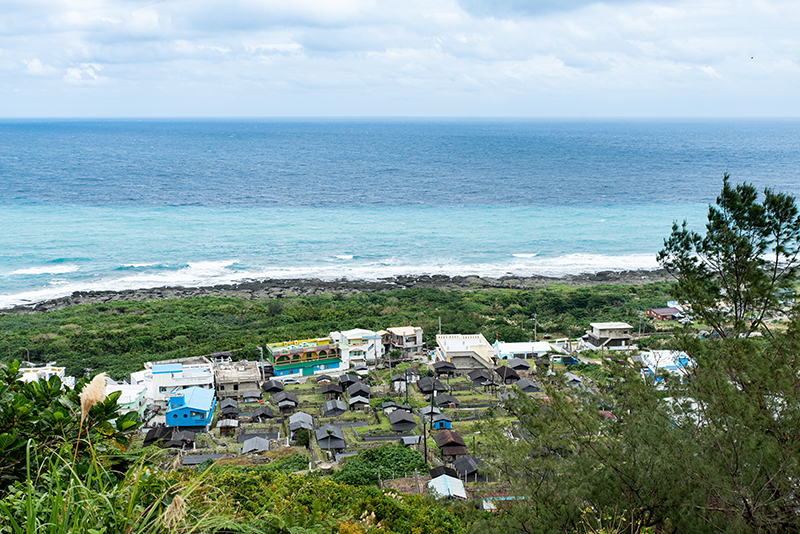
After the isle was open to tourism, most of the houses in the outer ring have been repurposed as B&B and some traditional Tao semi underground homes have been preserved.
The Magazine Covers Stories of the People You Know!
When you flip through the magazine, you would easily notice that a diverse range of ideas were juxtaposed next to each other. There is a section talking about soft issues like turning the traditional nimay (tarot cake) into fancy western pastry by adding pie crust. There are also sections which talked about the arrival of a 7-11 branch on Orchid Island and gave young people a chance to voice their views. Of course there is no shortage of young creativity. For example, the Tao language section translated classic movie lines into Yao; fun personality tests would tell you what kind of Orchid Island seafood you are or what kind of role would suit you during the flying fish festival. “We threw in all the elements we wanted into the magazine. Our principle is doing whatever we like and this creates a lot of possibilities,” si oyatan said.
Publication of the first issue was deliberately scheduled in February during Lunar New Year holiday because this is the period that sees most homecoming Tao young people. As there was an annual basketball game on the isle, the editorial team even went to court to promote their magazine. “We used the speaker and loudly announced that you will find your kids, brothers and sisters in the magazine,” si namet laughed at the memory.
“The tactic worked. At first, we were worried about circulation, but were surprised that the 500 copies of the first issue sold out quickly. Although we decided the approach of the magazine, but we welcome everyone. For people of our communities, they knew all the interviewees and thus the magazine gave them a sense of familiarity,” si oyatan said.
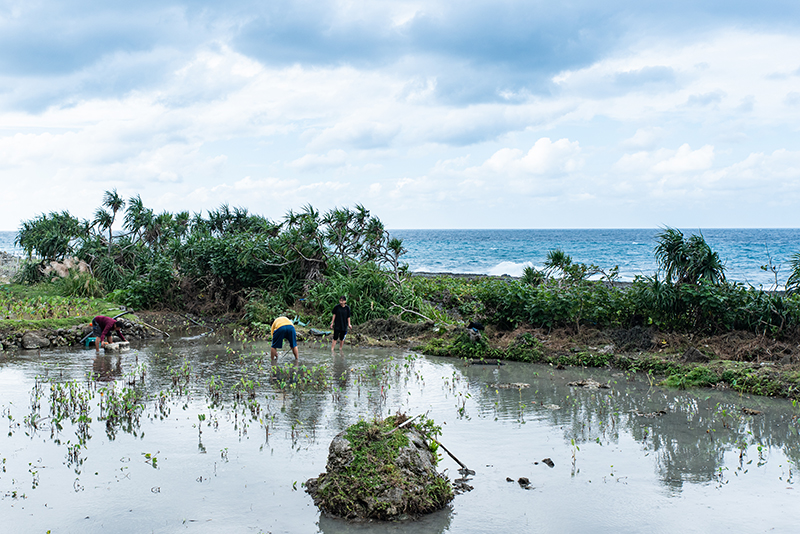
Taro field
Great Introductory Reading about Orchid Island
As the magazine received extensive positive feedback, Tao people started to look forward to the next issue and young Tao also started to learn about their culture. “For example, our first issue was about Tao names. Many people only knew their names but not the meaning. One of my cousins went to the older generation and asked about the meaning of his name after he read the article,” si namet explained.
Sometimes people would also question and challenge their content. For example, one published article was about tatoos and some members of the older generation were concerned that the article would mislead outsiders to believe that Tao people love tattoos while it is not a part of their culture. However, it was not the team’s intention to be judgmental but to explain why some young people got their tattoos and the meanings of their patterns. “There is a person who had five flying fish tattoos and one of the fish represented his father. That is a lovely story.” But si oyatan also admitted that “it could be a little frustrating when you heard criticism from the older generation, but we knew that they were only concerned about us not being thoughtful enough.”
The influence of the magazine not only stayed on Orchid Island but also traveled to Taiwan. si oyatan recalled that when she was studying in Taiwan, some classmates thought that Orchid Island is located in Yilan County or the only outlying island they knew was Green Island. “This magazine would be a great introductory reading about Orchid Island, with its soft and fun content. The reader would also be exposed to more diverse perspectives about Orchid Island.”
Learn the Culture in the Way You Like
si oyatan and si namet both think that indigenous peoples are facing a crisis of cultural gap. The most obvious problem for the thirty something generation is the inability to fluently speak in their mother tongue. “Although I feel sad and sorry, I am not going to lose my culture only because I could not speak fluent mother tongue.” si oyatan continued to add “as long as you want to learn, you can restore the culture. The real concern is that when our tradition is not respected and overlooked, the cultural gap will be widened.”
Although the publication of the magazine is temporarily halted, the two continued to pass on indigenous culture in their own ways. si oyatan and si namet are teachers in elementary school and kindergarten respectively. They often teach simple Tao to their students in their class. si oyatan, a lead singer of a band, also teaches her students Tao tunes. si namet is now learning traditional weaving techniques and hair dance while producing illustrations for Tao language teaching materials. “I learn the culture in the way I like and I believe people of my generation would find their own way too.”
In the past, young Tao people were most concerned about livelihoods when they came back home. Now more young people could return home and settle down with the rise of Orchid Island tourism. “Now we see more young people here than we did in junior and senior high!” si namet said happily. To tell the stories of the isle to tourists, young Tao people have returned to learn about their own culture. This not only created an opportunity to cultural continuity but also brought vitality and energy back to Orchid Island.
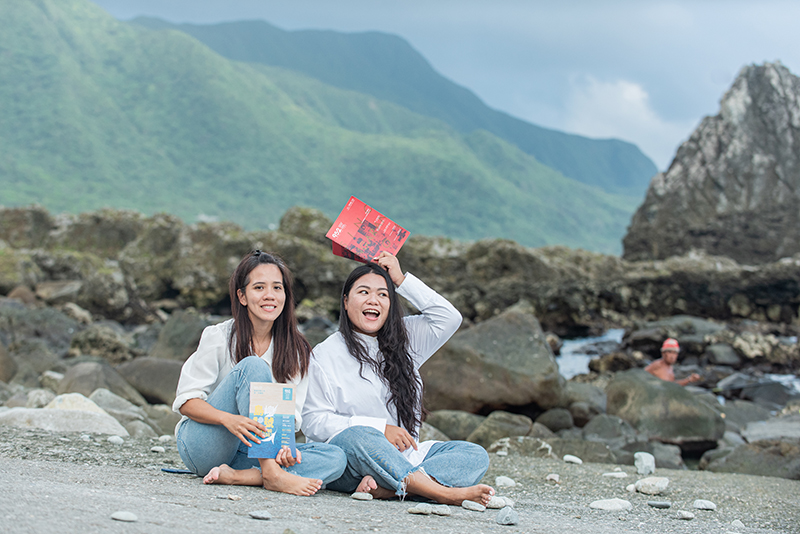
Although the publication of the magazine halted for the time being, si oyatan (left) si namet (right) have carried on their cultural learning journey in the fields of their interests.




